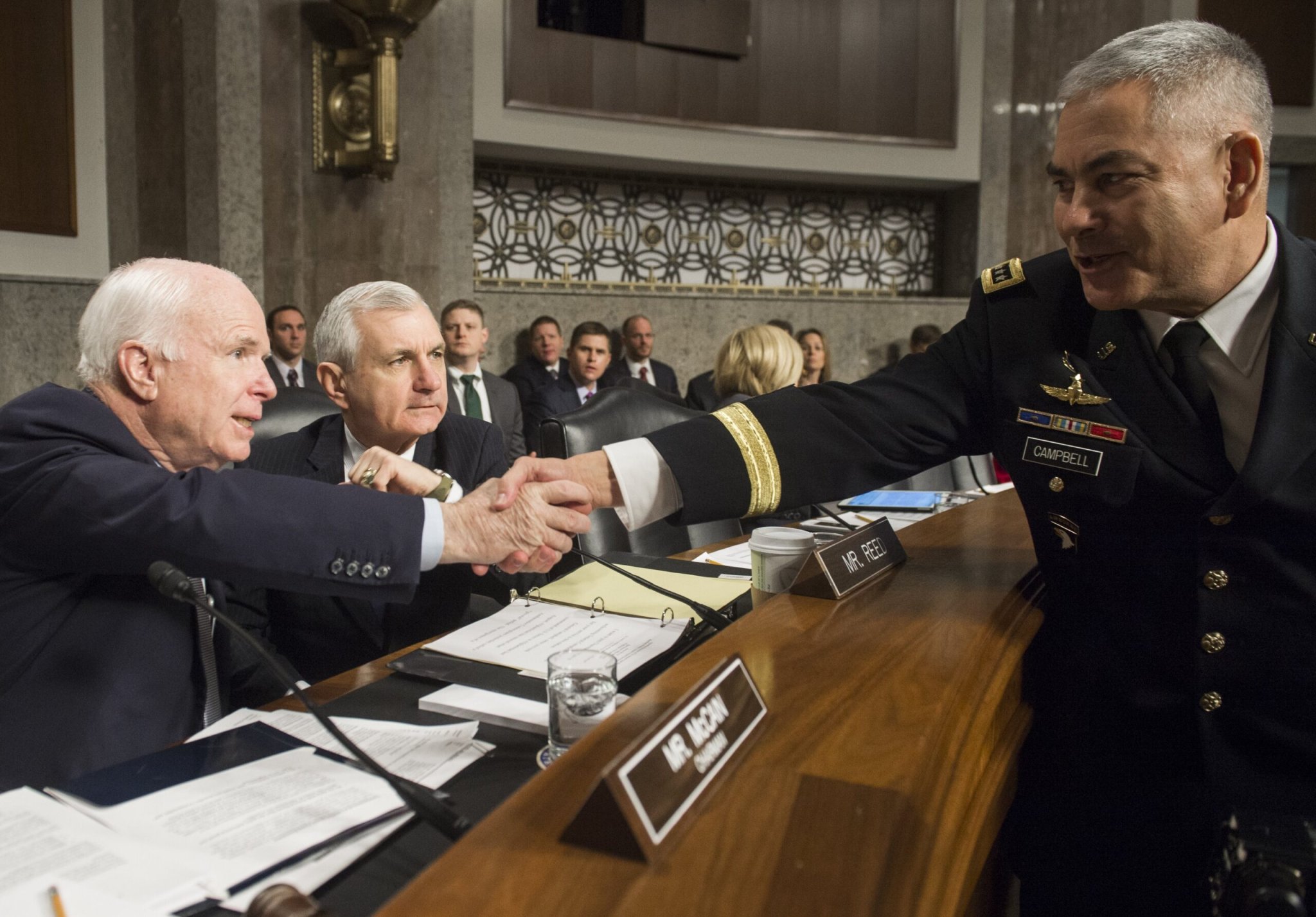

Years of budget cuts to the military are sending our service members straight to Arizona.
No, our airmen aren’t shipping out to my beautiful home state for a much-needed vacation. Faced with the reality that we now have the oldest, smallest and least ready Air Force in history, our airmen are resorting to searching for spare parts from retired aircraft in “The Boneyard” at Davis Monthan Air Force Base in Tucson just to get their planes back into combat.
It’s not just the Air Force that is facing these growing challenges. Our budgetary and readiness crisis has become tragically commonplace throughout the military services. Arbitrary budget cuts have shrunk the Army by nearly 100,000 soldiers since 2012, bringing it to a size that Army Chief of Staff Gen. Mark Milley testified has put the Army at “high military risk.”
The Navy’s fleet of 272 ships is too small to address critical security challenges. Even with recent shipbuilding increases, the Navy will not achieve its requirement of 308 ships until 2021. Our shrinking fleet is in-turn extending deployments — taking a toll on our sailors and military families, while delaying much-needed ship maintenance. Marine Corps aviation is also suffering with a fleet that is too small and too old. As a result, our Marines don’t have enough aircraft on which to train, and are instead spending time they would otherwise devote to practicing flight techniques to maintaining the remaining aircraft to keep them in operation.
As the force has shrunk, readiness has suffered. Just one-third of Army brigade combat teams are ready to deploy and operate decisively. And just two of the Army’s 60 brigade combat teams are at the highest level of combat readiness. In order to invest in readiness, the Army has had to make difficult trade-offs — reducing troop end-strength and delaying modernization needed to keep up with our adversaries and meet future threats.
“These arbitrary, across-the-board budget cuts under sequestration are … putting the lives of American service members at greater risk.”
Let’s be clear: the United States military is still the greatest fighting force in the world. But these arbitrary, across-the-board budget cuts under sequestration are crippling force modernization, undercutting training and putting the lives of American service members at greater risk. This is all happening as the threats around the world — and to the homeland — are growing. The ongoing war in Afghanistan, the rise of ISIL, Russia’s aggression in Europe, and China’s assertiveness in the Pacific are creating new demands for troops, while the vacuum left behind in Iraq and the ongoing slaughter in Syria have given ISIL terrorists the space they need from which to conduct, direct and inspire attacks.
At the same time the requirements of our military have continued to grow, for five years now the Budget Control Act of 2011 has imposed arbitrary caps on defense spending. And despite periodic relief from those caps, including the Bipartisan Budget Act passed last year, every one of our military services — the Army, the Navy, the Air Force, and, yes, the Marine Corps — remains undersized, unready, and underfunded to meet current and future threats.
As retired Marine Corps Gen. James Mattis testified last year to the Senate Armed Services Committee: “No foe in the field can wreak such havoc on our security that mindless sequestration is achieving today.” At a time when the challenges we face are growing in size and complexity, we cannot afford to continue down this dangerous path.
“I can assure you: we will continue the fight to roll back mindless sequestration.”
I offered an amendment to the National Defense Authorization Act for Fiscal Year 2016 to increase defense spending above the current spending caps and reverse short-sighted cuts to our military. Unfortunately, Senate Democrats opposed my amendment in their stand to also increase domestic spending at agencies like the EPA and the IRS. I can assure you: we will continue the fight to roll back mindless sequestration. For the sake of the men and women deployed all of the world and the security of our nation, we must.
At the same time, I have long believed that providing for the common defense is not just about a bigger defense budget. It’s also about ensuring our Department of Defense is being a good steward of American tax dollars — using them in the most efficient and effective ways to make the best use out of our limited resources. I’m proud that this year’s NDAA, which we are currently conferencing with the House of Representatives, delivers some of the most significant reforms to the Pentagon in decades and reinvests savings in better preparing, equipping and caring for our service members.
We ask a lot of our service members, and they never let us down. It’s past time we do our part as a nation to give them the resources, funding and capabilities they need to succeed. Passing the NDAA is just the first step towards this end. But we need everyone on board — Republicans and Democrats alike — to finally reverse the budget-driven cuts to the capabilities our armed forces need to defend the nation.
The latest on Task & Purpose
- Opinion: In the name of health care freedom, millions of veterans may lose theirs
- Special Forces vs special operations forces — what’s the difference?
- Commandant wants all Marines to do a tour in the Indo-Pacific
- VA claims processors overwhelmed, quitting from high case load
- First photos of 101st Airborne soldiers testing the Army’s new rifles
